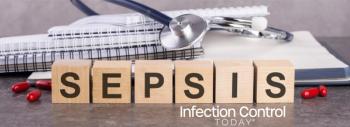
- Infection Control Today, September/October 2023 (Vol. 27 No. 7)
- Volume 27
- Issue 7
Visible-Light Continuous Environmental Disinfection System Reduces Pathogens
Visible-light continuous environmental disinfection system reduces microbial contamination and surgical site infections, as noted in an AJIC study. Experts explain the study and the technology.
Reaching for zero infections in orthopedic operating rooms led one facility to find a visible-light continuous environmental disinfection system. Recently, to find out how the system works and the results of the study that examined the system, Infection Control Today® spoke with Cliff Yahnke, PhD, chief scientist and head of clinical affairs for Indigo-Clean and Kenall Manufacturing; and Lynnelle Murrell, RN, BSN, CIC, director, infection prevention and control, Maury Regional Medical Center.
“Indigo-Clean, a continuous environmental disinfection technology, uses visible light to safely and continuously kill harmful viruses and bacteria within the environment while also providing ambient illumination within the space,” states the
Murrell explained, “With our patient population and orthopedic surgeries, we have found that you] have to keep doing the [infection prevention] bundle; you can't just let one part of what prevents infection. While the lights are there, they're constant. And I'll go on a little rabbit trail to say we've even checked in their efficacy a couple of times, to make sure that they are still those in the room as they should….But you have to keep going back as far as the human element and mak[e] sure that we are doing all the basic things [like] we are wearing our surgical attire.”
Yahnke added, “Where Lynette and I ended up [in] the first phase of our research, we've started to look at other questions that we can answer in the operating room, specifically how, or what the benefit of the lights might be a real-time intraoperatively while the patient is on the table. And so we've done a pilot study looking at, essentially, the transmission of organisms within the room, from when the room is prepped to when the patient is brought in and prepared for anesthesia. And we specifically use a technique called wholesale genomic analysis to fingerprint various strains of organisms. And this was a pilot study that was done at the University of Iowa; it was published by AORN [Association of periOperative Registered Nurses Conference] in 2020. We have a full-blown randomized study going on at a major school right now; hopefully, that'll be ready to publish here in the very near future. But the idea is that it highlights the benefits of this unique technology, which is that it can be used while people are in the room. And you know, that also highlights one of the common misconceptions of the technology is that people apply standard metrics that they use for ultraviolet light, for example, which is, you know, kind of log kill or the amount of kill in a very short period of time. Whereas we asked the more medically relevant questions, such as reduction of post-operative infection and intraoperative transmission. And we find that those questions resonate with medical professionals because that's how they view things. People realize there are organisms contaminated throughout the hospital. And that, of course, reducing organisms is a good thing. But it doesn't necessarily answer the medical question: does this benefit the patient in any way? And that's what we're trying to focus on with our research.”
Yahnke and Murrell also discussed the system’s effect against SARS-CoV-2. “The other piece of research, which is incredibly relevant to our time here, is effectiveness against SARS-CoV-2 and other enveloped viruses, and historically visible light was just considered effective against viruses,” Yahnke said. “But we answered that question in a way that no one had before. It's ineffective against non-enveloped viruses, such as norovirus. Still, it turns out that enveloped viruses, such as SARS-CoV-2 and influenza A, have this fatty lipid layer surrounding the inner contents of the virus. And that fatty lipid layer has the hydrocarbons required to absorb the visible light to create the oxidative reaction, which then can disassociate the organism. I traveled in the middle of this entire pandemic in the fall of 2020, to Mount Sinai in New York, where we did this research with Adolfo Garcia-Sastre, PhD, [Professor in the Department of Microbiology and Director of the
Articles in this issue
over 2 years ago
ICT's Product Locator: September/October 2023over 2 years ago
Bug of the Month: I Make Tummies Hurtover 2 years ago
Infection Prevention in the NICU: A Changing Landscapeover 2 years ago
Ventilation and the Risk of Health Care–Associated Infectionsover 2 years ago
I’m Not Just an Infection Preventionistover 2 years ago
AHE Exchange Conference & Solution Center 2023 ReviewNewsletter
Stay prepared and protected with Infection Control Today's newsletter, delivering essential updates, best practices, and expert insights for infection preventionists.






